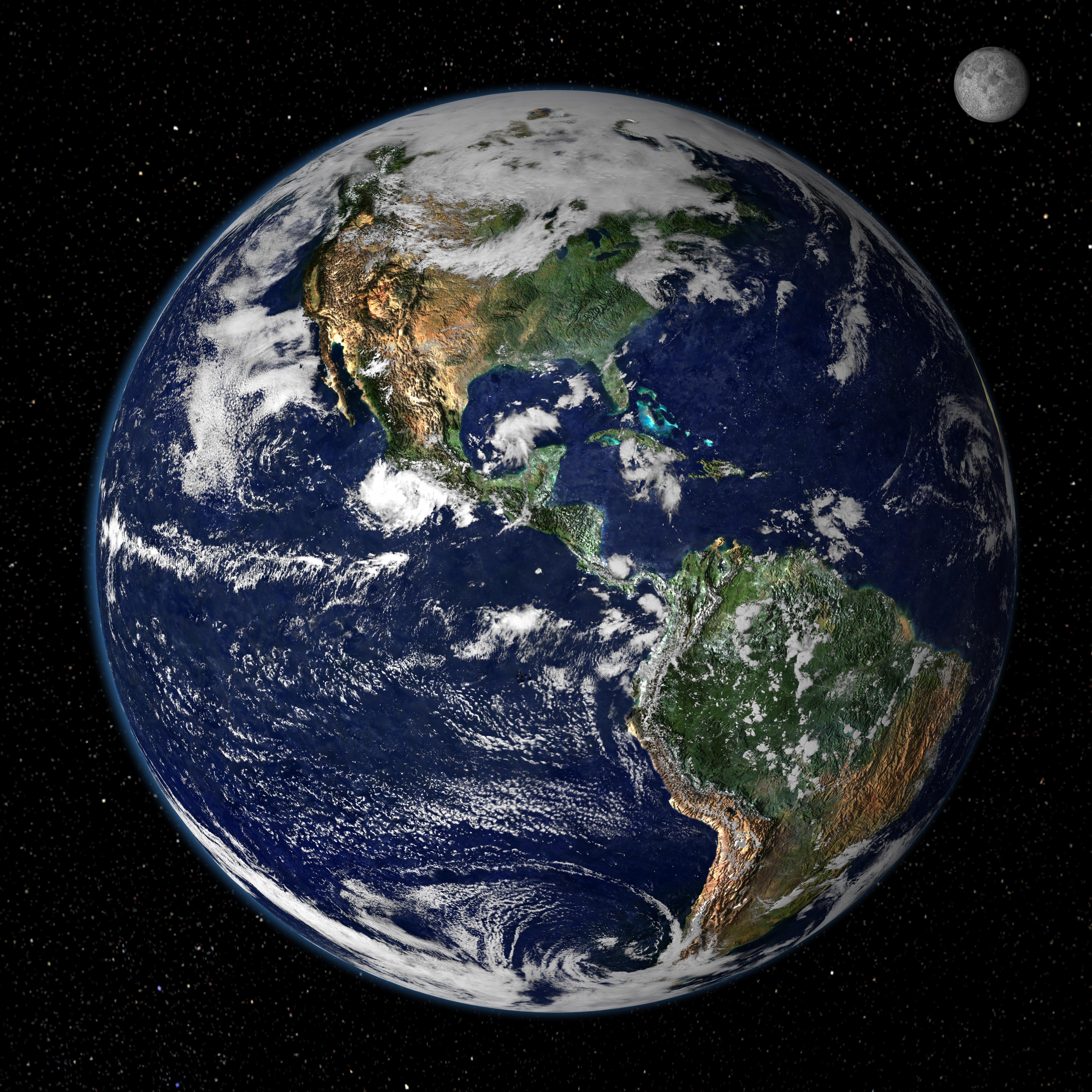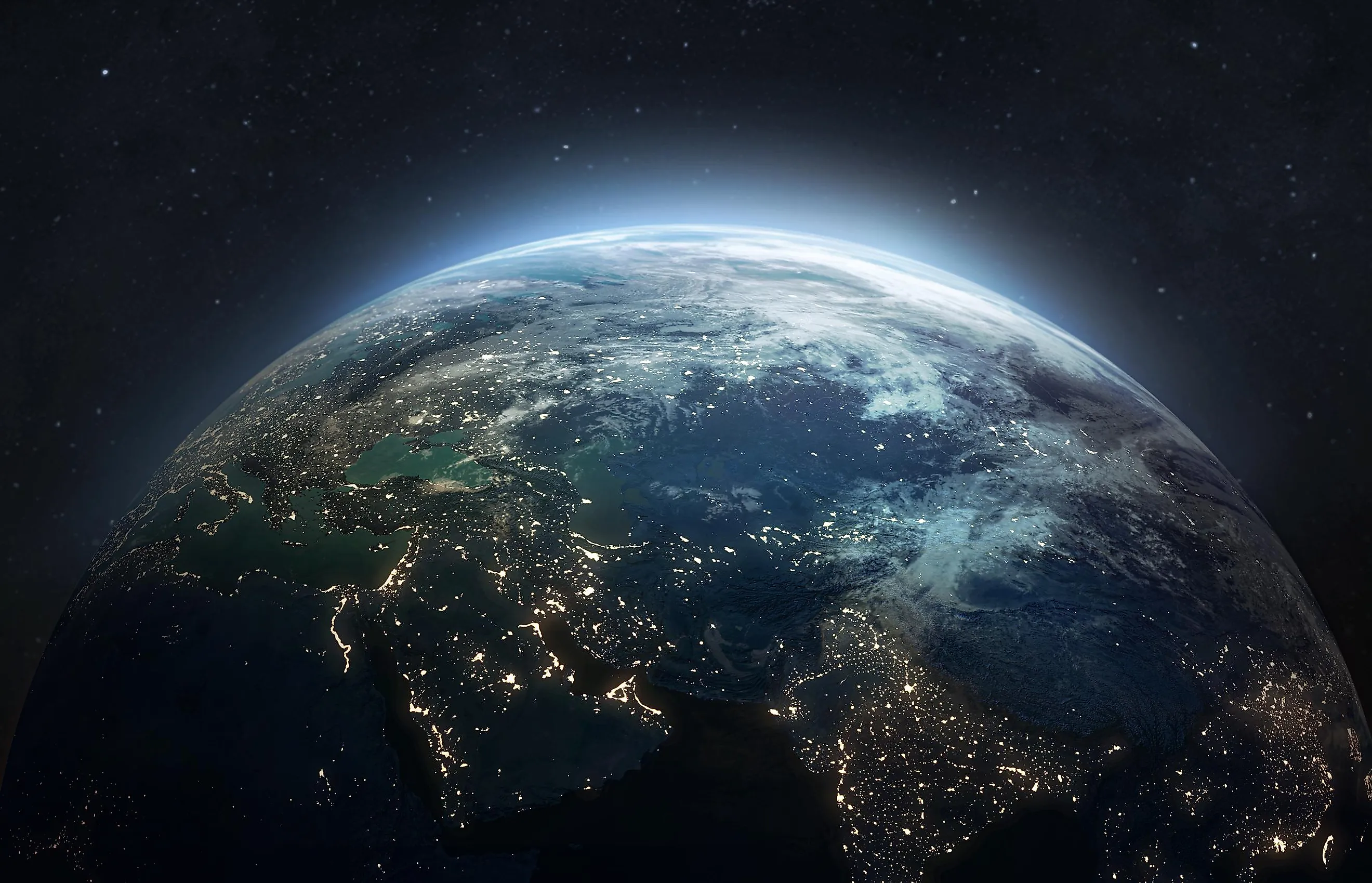Exploring The Vastness: Unpacking The Earth Size Circumference
Have you ever truly stopped to consider the sheer scale of our home planet, the Earth, and its impressive earth size circumference? It's a measurement that, frankly, helps us grasp just how big this spinning rock we live on really is. For many of us, the concept of such a vast distance can feel a bit abstract, almost too big to properly picture in our minds.
Thinking about the Earth's circumference is not just for scientists or cartographers; it is that a fundamental piece of information that shapes how we understand geography, travel, and even our place in the cosmos. Knowing this measurement helps us appreciate the distances between continents, the length of a journey around the globe, and the incredible engineering feats required to send signals or people across such a considerable expanse.
Today, with tools that bring the world right to our screens, understanding these grand dimensions feels a bit more accessible. We can, for instance, use applications like Google Earth to visualize distances and explore our planet from a new vantage point. This kind of technology really puts the earth size circumference into a more relatable context, allowing us to see it, more or less, with our own eyes.
Table of Contents
- The Earth's True Girth: What is the Circumference?
- A Historical Look: Early Attempts to Measure Our Planet
- Exploring Earth's Scale with Modern Tools: Enter Google Earth
- Why Does the Earth's Circumference Matter Today?
- Frequently Asked Questions About Earth's Circumference
The Earth's True Girth: What is the Circumference?
So, let's get down to the actual numbers for the earth size circumference. The Earth is, well, not a perfect sphere, which is a bit interesting to consider. It bulges out a little around the middle, like a slightly squashed ball. This means its measurement around the equator is actually a little bit different from its measurement if you were to go around it through the poles.
Equator vs. Poles: A Slight Difference
Around the equator, the Earth's circumference measures approximately 40,075 kilometers, which is about 24,901 miles. That's a really big number, isn't it? If you were to travel directly around the planet through the North and South Poles, however, the distance would be slightly less, coming in at about 40,007 kilometers, or roughly 24,859 miles. This slight variation is due to the planet's rotation, which causes that noticeable bulge around its middle. It's a pretty fascinating detail, actually.
Putting That Number in Perspective
To truly grasp the earth size circumference, let's try to put those numbers into some sort of perspective. Imagine driving a car at a steady speed of 100 kilometers per hour (about 60 miles per hour). To travel the entire circumference of the Earth at the equator, it would take you, more or less, over 400 hours of continuous driving. That's more than 16 full days without stopping for gas, food, or sleep! It really helps to show just how vast our planet truly is, doesn't it?
Or, consider this: if you could somehow walk around the Earth's equator without stopping, taking about 5 kilometers (3 miles) an hour, it would take you nearly a year of non-stop walking to complete the journey. That's a rather long stroll, to be honest. These examples, you know, really highlight the immense scale involved.
A Historical Look: Early Attempts to Measure Our Planet
For a very long time, people wondered about the earth size circumference. Before satellites and modern technology, figuring out how big our planet was seemed like an incredibly difficult task. Yet, rather remarkably, ancient thinkers made some truly impressive attempts to measure it, using clever observations and a good bit of geometry.
Eratosthenes' Genius and Ancient Wisdom
One of the most famous and earliest known attempts to calculate the Earth's circumference came from a Greek scholar named Eratosthenes, who lived around 276 to 195 BC. He was, actually, a librarian in Alexandria, Egypt. His method was quite ingenious and, in a way, surprisingly accurate for his time. He observed that on a specific day of the year, the summer solstice, the sun's rays shone directly down a well in Syene (modern-day Aswan), meaning there was no shadow. At the same time, in Alexandria, which was north of Syene, a vertical stick cast a small shadow. By measuring the angle of that shadow and knowing the distance between the two cities, he used simple geometry to calculate the Earth's circumference. His calculation was, apparently, remarkably close to the actual figure, demonstrating an incredible grasp of observation and mathematical reasoning.
The Quest for Precision Through Time
After Eratosthenes, many others tried to refine these measurements. Over centuries, various civilizations and scholars, you know, continued to work on this problem, each adding a little bit more precision. From Arab scholars in the Middle Ages to European explorers and scientists during the Age of Discovery, the quest to accurately determine the earth size circumference was a persistent scientific pursuit. These efforts were vital for mapping, navigation, and generally understanding our world better. It was, in some respects, a truly global effort over many generations.
Exploring Earth's Scale with Modern Tools: Enter Google Earth
Today, we have tools that make visualizing the earth size circumference and exploring our planet's vastness incredibly easy. One such tool, which is, frankly, quite amazing, is Google Earth. This application allows you to fly anywhere on Earth, zoom in on almost any location, and even measure distances between points. It provides a tangible way to interact with the scale of our planet, right from your computer or mobile device.
Visualizing Distances and Dimensions
With Google Earth, you can truly get a sense of how long 40,000 kilometers feels. You can, for instance, draw a path across an ocean or a continent and see the distance instantly. This really helps to put the abstract numbers into a visual context. You can zoom out to see the entire globe, then zoom in to see your own neighborhood, giving you a pretty unique perspective on your place within the grand scale of the earth size circumference. It's almost like having the entire planet in your hands, which is a rather cool thought.
Practical Uses for Understanding Our World
Beyond just curiosity, Google Earth offers practical ways to understand our world's dimensions. For example, urban planners might use it to measure distances for new infrastructure, or students might use it to understand geographical relationships. Even everyday people can use it to plan trips or just explore faraway places from their homes. It's, basically, a powerful educational and exploratory tool that brings the world's measurements to life. It helps us, in a way, to connect with the physical reality of our planet.
Tips for Using Google Earth to Explore Scale
If you're interested in exploring the earth size circumference and other global dimensions using this powerful tool, there are some really helpful resources available. The official Google Earth Help Center is a fantastic place where you can find tips and tutorials on using Google Earth and get answers to frequently asked questions. It's a great spot to learn about all the different features that can help you visualize distances and understand the planet's scale.
For instance, the menu bar in Google Earth is where you can find most of its existing features. Learning how to use the measurement tools, which are, you know, quite straightforward, will allow you to draw lines and paths to see distances in kilometers or miles. This can really help you grasp the vastness of continents or oceans in relation to the overall earth size circumference. Google Earth Pro, for example, runs on recent versions of Ubuntu and Fedora Linux distributions, and it might also work on other common distributions, offering a robust platform for detailed exploration.
You can also learn more about Google Earth's measuring capabilities on our site, and find tips for exploring different regions on this page . These resources can help you get started with understanding how to truly leverage Google Earth to appreciate the immense scale of our world.
Why Does the Earth's Circumference Matter Today?
Even with all our modern technology, the earth size circumference remains a very important concept. It's not just a historical fact or a number in a textbook; it has real-world implications for how we live, how we travel, and how we study our planet. Understanding this fundamental measurement helps us in countless ways, often without us even realizing it.
From Navigation to Climate Science
Knowing the Earth's precise dimensions is absolutely crucial for accurate navigation, whether it's for ships crossing oceans, airplanes flying across continents, or even the GPS system in your car. All these systems rely on incredibly precise models of the Earth's shape and size. Without a good understanding of the earth size circumference, our maps would be inaccurate, and global travel would be far more challenging, if not impossible. Furthermore, it's vital for climate science; understanding the planet's surface area and volume helps scientists model climate patterns, ocean currents, and atmospheric circulation, which are, you know, incredibly complex systems.
A Reminder of Our Place
Beyond the practical applications, the earth size circumference serves as a powerful reminder of our planet's grandeur. It helps us appreciate the scale of the natural world and the delicate balance of our ecosystems. When you consider the vastness of the Earth, it can, in a way, inspire a sense of wonder and a desire to protect this unique home we share. It's a rather humbling thought, to be honest, to think about how much there is to explore and understand.
Frequently Asked Questions About Earth's Circumference
Here are some common questions people often have about the Earth's size and its measurement:
How big is the Earth around the equator?
The Earth's circumference around its equator is approximately 40,075 kilometers, which is about 24,901 miles. This is the longest distance you could measure around the planet, given its slightly bulging shape. It's a truly immense measurement, you know, when you think about it.
Who first measured the Earth's circumference accurately?
The first person credited with a remarkably accurate calculation of the Earth's circumference was Eratosthenes, a Greek scholar who lived in the 3rd century BC. He used observations of shadows and angles at different locations to derive his measurement, which was, frankly, very close to modern figures, especially considering the tools he had.
How does Google Earth show the Earth's scale?
Google Earth allows you to visualize the Earth's scale by providing a global view that you can zoom into any location. You can use its built-in measurement tools to draw lines and paths, instantly seeing the distances in kilometers or miles. This interactive experience helps to make the abstract numbers of the earth size circumference much more tangible and understandable. It's a pretty neat way to explore, actually.

Earth from Space: Photos and Wallpapers | Earth Blog

Earth Images From Space

Earth - WorldAtlas